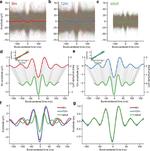Holly Rayson
Postdoctoral researcher
Institut des Sciences Cognitives - Marc Jeannerod, UMR5229 CNRS
Hôpital Femme Mère Enfant
Biography
I am a postdoctoral researcher at the Hôpital Femme Mère Enfant and Institut des Sciences - (CNRS) in Lyon. The main focus of my research is on neurocognitive development underlying social perception and social interaction, as well as the effects of early social experience on socio-cognitive and affective functioning. I use multimodal techniques including electroencephalography (EEG), eye-tracking, behavioural observation, magnetic resonance imaging (MRI), longitudinal research designs, and advanced statistical methods.
- Neurocognitive and socioemotional development
- Early social experience and adversity
- Social perception and interaction
- Developmental and parental psychopathology
- EEG, MRI, eye-tracking, behavioural observation
-
PhD in Developmental Cognitive Neuroscience, 2017
University of Reading
-
MSc in Developmental Psychopathology, 2012
University of Reading
-
BSc in Psychology, 2010
University of Warwick
Featured Publications
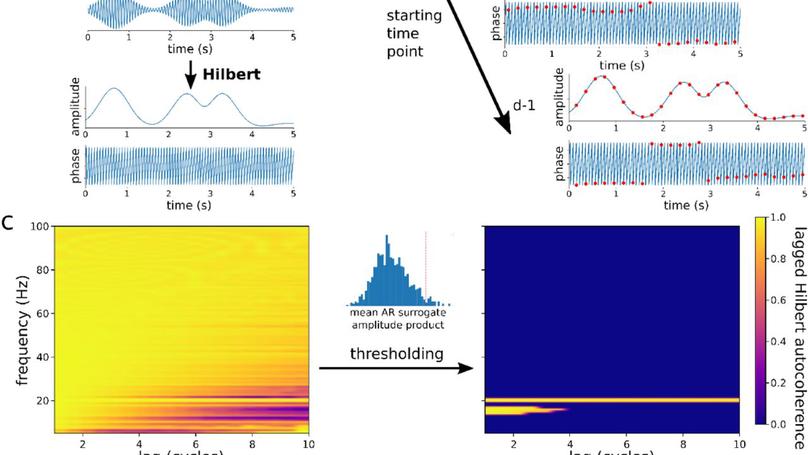
Analysis of neural activity in different frequency bands is ubiquitous in systems and cognitive neuroscience. Recent analytical breakthroughs and theoretical developments rely on phase maintenance of oscillatory signals without considering whether or not this assumption is met. Lagged (auto)coherence, the coherence between a signal and itself at increasing temporal delays, has been proposed as a way to quantify the rhythmicity, or periodicity, of a signal. However, current Fourier-based lagged autocoherence algorithms suffer from poor spectral accuracy and resolution, aliasing effects that become more pronounced at higher frequencies, and conflation with amplitude covariation, especially in frequency ranges in which the signal power is low. We introduce a continuous lagged autocoherence metric, lagged Hilbert autocoherence, that addresses these shortcomings by using multiplication in the frequency domain for precise bandpass filtering, instantaneous analytic signals via the Hilbert transform, and thresholding using the amplitude covariation of surrogate data generated by an autoregressive model. We show that this version of lagged coherence yields vastly higher spectral accuracy and resolution than lagged Fourier autocoherence, and that this unlocks additional, increasingly fine-grained applications. This includes examination of 1) frequency-specific differences in rhythmicity between conditions, 2) changes in signal rhythmicity during learning, and 3) the relationship between frequency-specific rhythmicity and behavior, trial-by-trial. Lagged Hilbert autocoherence thus offers a significant toolset advancement for analysis of neurophysiological rhythmicity.
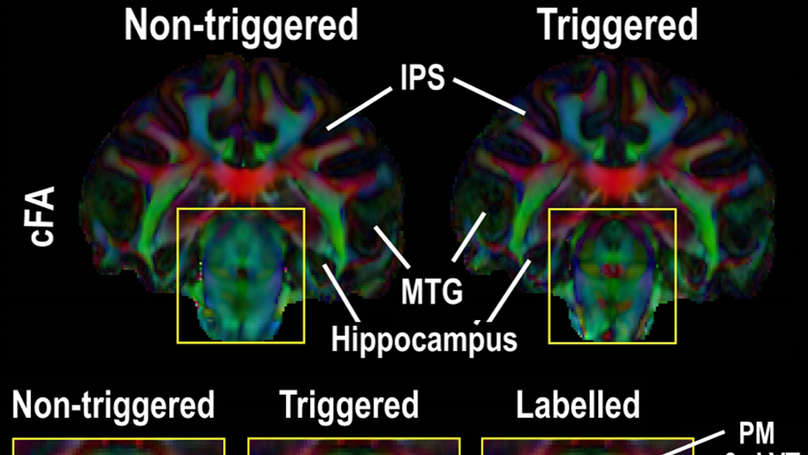
The monkey brain represents a key research model thanks to its strong homologies with the humans, but diffusion-MRI (dMRI) performed at millimeter-level resolution using clinical scanners and pulse-sequences cannot take full advantage of this. Cardiovascular effects on 3D multi-shot Echo-Planar Imaging (3D-msEPI) dMRI were characterized at submillimetric resolution by comparing triggered and non-triggered diffusion-weighted (DW)-images and diffusion tensor imaging (DTI) maps. We also investigated the value of 3D-msEPI with cardiovascular-triggering to achieve dMRI of the anesthetized macaque brain with high resolution previously restricted to ex-vivo brains. Eight DW-images with voxel-size = 0.5 × 0.5 × 1 mm3 and b = 1500 s/mm2 were collected at 3 Tesla from two macaques using triggered and then non-triggered 3D-msEPI. Statistical analysis by mixed models was used to compare signal-to-noise ratio (SNR) and ghost-to-signal ratio (GSR) of DW-images with and without triggering. Brain DTI with isotropic-resolution of 0.4 mm and b = 1000 s/mm2 was also collected in three macaques with triggered 3D-msEPI and reapplied without triggering in one. Cardiovascular pulsations induce inter-shot phase-errors with non-linear spatial dependency on DW-images, resulting in ghost-artifacts and signal loss particularly in the brainstem, thalamus, and cerebellum. Cardiovascular-triggering proved effective in addressing these, recovering SNR in white and gray matter (all p < 0.0001), and reducing GSR from 16.5 ± 10% to 4.7 ± 4.2% on DW-images (p < 0.0001). Triggered 3D-msEPI provided DTI-maps with the unprecedented spatial-resolution of 0.4 mm, enabling several substructures of the macaque brain to be discerned and thus analyzed in vivo. The value of cardiovascular-triggering in maintaining DTI-map sharpness and guaranteeing accurate tractography results in the brainstem, thalamus, and cerebellum was also demonstrated. In conclusion, this work highlights the effects of cardiovascular pulsations on brain 3D-dMRI and the value of triggered 3D-msEPI to provide high-quality diffusion-MRI of the anesthetized macaque brain. For routine studies, 3D-msEPI must be coupled with appropriate techniques to reduce acquisition duration.

Beta activity is thought to play a critical role in sensorimotor processes. However, little is known about how activity in this frequency band develops. Here, we investigated the developmental trajectory of sensorimotor beta activity from infancy to adulthood. We recorded EEG from 9-month-old, 12-month-old, and adult humans (male and female) while they observed and executed grasping movements. We analyzed “beta burst” activity using a novel method that combines time-frequency decomposition and principal component analysis. We then examined the changes in burst rate and waveform motifs along the selected principal components. Our results reveal systematic changes in beta activity during action execution across development. We found a decrease in beta burst rate during movement execution in all age groups, with the greatest decrease observed in adults. Additionally, we identified three principal components that defined waveform motifs that systematically changed throughout the trial. We found that bursts with waveform shapes closer to the median waveform were not rate-modulated, whereas those with waveform shapes further from the median were differentially rate-modulated. Interestingly, the decrease in the rate of certain burst motifs occurred earlier during movement and was more lateralized in adults than in infants, suggesting that the rate modulation of specific types of beta bursts becomes increasingly refined with age.

Infant facial attractiveness is an important facilitator for adult-infant caregiving behaviour. Disruption to typical infant facial configurations can, however, attenuate their perceived attractiveness, as rated by adult observers. Previous research has either focused on how ratings are affected by observer characteristics (e.g., male/female), or alterations to infant faces, either experimentally, or naturalistically induced, such as the presence of a cleft lip. Little research has however been conducted on the effects of observer experience on adult ratings of infant facial attractiveness. Such effects could inform clinical work and policies aimed at promoting positive perception of facial malformations. The present study thus explored the effects of familiarisation on how typical and atypical infant facial configurations are evaluated by adults. We recruited two groups of female participants and compared their subjective attractiveness ratings of infant faces (24 typical and 24 cleft-affected), at baseline, and at one-week post-test. Between the two assessments, one group (n = 41) underwent a week-long training phase, where they were familiarised with cleft lip/palate-related visual and informational stimuli, while the control group (n = 44) received no training. Significantly higher ratings were provided for faces of typically developing versus cleft-affected infants by both groups of participants at baseline. At post-test, this pattern of ratings was repeated in participants belonging to the control group, while familiarised participants showed an increase, compared to baseline, in their ratings of cleft-affected faces and no difference between their evaluation of the latter and that of typically developing faces. These findings extend our understanding of the observer’s experience in the evaluation of infant faces, beyond the effects of the structural characteristics of the observed faces. Results also highlight familiarity as a potentially protective influence against the negative consequences of alterations to typical facial configurations, suggesting avenues for intervention in supporting adult caregivers in the context of neonatal facial malformations.
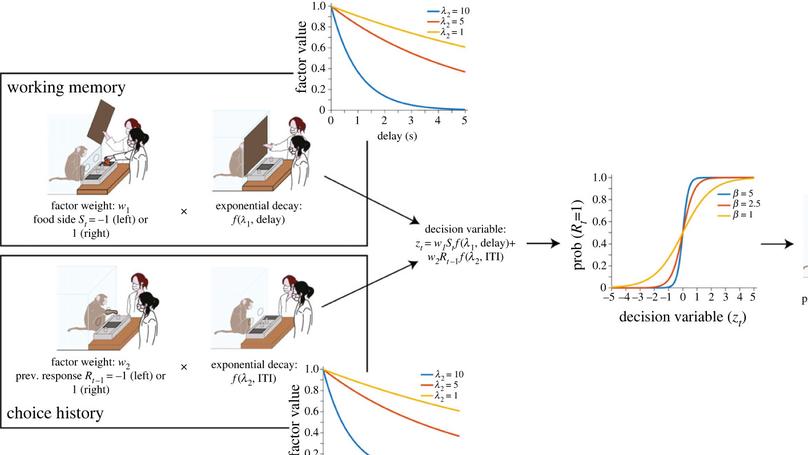
Executive function (EF) describes a group of cognitive processes underlying the organization and control of goal-directed behaviour. Environmental experience appears to play a crucial role in EF development, with early psychosocial deprivation often linked to EF impairment. However, many questions remain concerning the developmental trajectories of EF after exposure to deprivation, especially concerning specific mechanisms. Accordingly, using an ‘A-not-B’ paradigm and a macaque model of early psychosocial deprivation, we investigated how early deprivation influences EF development longitudinally from adolescence into early adulthood. The contribution of working memory and inhibitory control mechanisms were examined specifically via the fitting of a computational model of decision making to the choice behaviour of each individual. As predicted, peer-reared animals (i.e. those exposed to early psychosocial deprivation) performed worse than mother-reared animals across time, with the fitted model parameters yielding novel insights into the functional decomposition of group-level EF differences underlying task performance. Results indicated differential trajectories of inhibitory control and working memory development in the two groups. Such findings not only extend our knowledge of how early deprivation influences EF longitudinally, but also provide support for the utility of computational modelling to elucidate specific mechanisms linking early psychosocial deprivation to long-term poor outcomes.
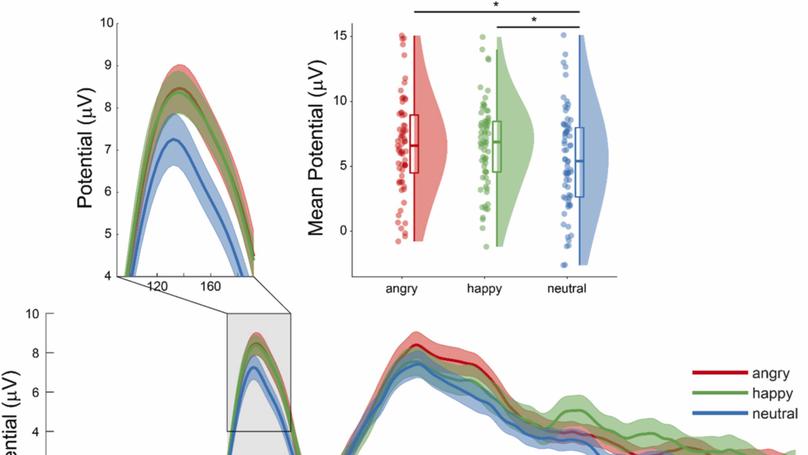
Limited prospective research has examined whether attention biases to emotion moderate associations between Behavioural Inhibition (BI) and anxiety in preschool-aged children. Furthermore, there has been an over-reliance on behavioral measures in previous studies. Accordingly, we assessed anxiety in a sample of preschool-aged children (3–4 years) at baseline, and again approximately 6 and 11 months later, after they started school. At baseline, children completed an assessment of BI and an EEG task where they were presented with angry, happy, and neutral faces. EEG analyses focused on ERPs (P1, P2, N2) associated with specific stages of attention allocation. Interactions between BI and emotion bias (ERP amplitude for emotional versus neutral faces) were found for N2 and P1. For N2, BI was significantly associated with higher overall anxiety when an angry bias was present. Interestingly for P1, BI was associated with higher overall anxiety when a happy bias was absent. Finally, interactions were found between linear time and happy and angry bias for P1, with a greater linear decrease in anxiety over time when biases were high. These results suggest that attention to emotional stimuli moderates the BI-anxiety relationship across early development.

Temporal dynamics of behavior, particularly facial expressions, are fundamental for communication between individuals from very early in development. Facial expression processing has been widely demonstrated to involve embodied simulative processes mediated by the motor system. Such processes may be impaired in patients with congenital facial palsy, including those affected by Moebius syndrome (MBS). The aims of this study were to investigate (a) the role of motor mechanisms in the processing of dynamic facial expression timing by testing patients affected by congenital facial palsy and (b) age-dependent effects on such processing. Accordingly, we recruited 38 typically developing individuals and 15 individuals with MBS, ranging in age from childhood to adulthood. We used a time comparison task where participants were asked to identify which one of two dynamic facial expressions was faster. Results showed that MBS individuals performed worse than controls in correctly estimating the duration of facial expressions. Interestingly, we did not find any performance differences in relation to age. These findings provide further evidence for the involvement of the motor system in processing facial expression duration and suggest that a sensorimotor matching mechanism may contribute to such timing perception from childhood.

Parental reading to young children is well-established as being positively associated with child cognitive development, particularly their language development. Research indicates that a particular, “intersubjective,” form of using books with children, “Dialogic Book-sharing” (DBS), is especially beneficial to infants and pre-school aged children, particularly when using picture books. The work on DBS to date has paid little attention to the theoretical and empirical underpinnings of the approach. Here, we address the question of what processes taking place during DBS confer benefits to child development, and why these processes are beneficial. In a novel integration of evidence, ranging from non-human primate communication through iconic gestures and pointing, archaeological data on Pre-hominid and early human art, to experimental and naturalistic studies of infant attention, cognitive processing, and language, we argue that DBS entails core characteristics that make it a privileged intersubjective space for the promotion of child cognitive and language development. This analysis, together with the findings of DBS intervention studies, provides a powerful intellectual basis for the wide-scale promotion of DBS, especially in disadvantaged populations.
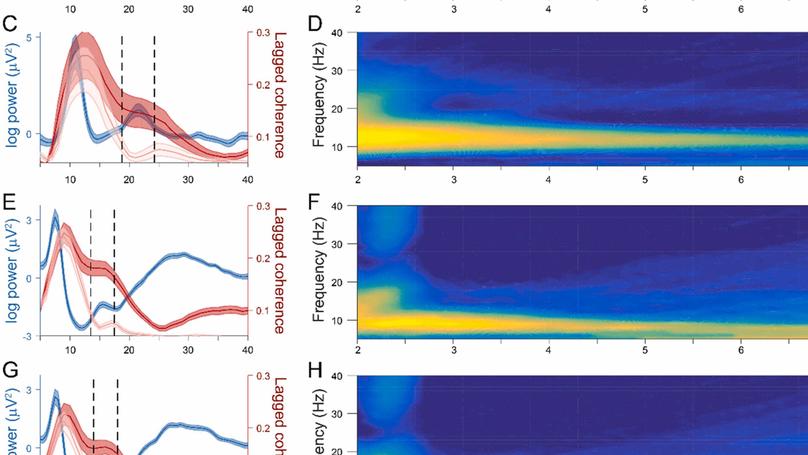
Developmental EEG research often involves analyzing signals within various frequency bands, based on the assumption that these signals represent oscillatory neural activity. However, growing evidence suggests that certain frequency bands are dominated by transient burst events in single trials rather than sustained oscillations. This is especially true for the beta band, with adult beta burst timing a better predictor of motor behavior than slow changes in average beta amplitude. No developmental research thus far has looked at beta bursts, with techniques used to investigate frequency-specific activity structure rarely even applied to such data. Therefore, we aimed to i) provide a tutorial for developmental EEG researchers on the application of methods for evaluating the rhythmic versus transient nature of frequency-specific activity; and ii) use these techniques to investigate the existence of sensorimotor beta bursts in infants. We found that beta activity in 12-month-olds did occur in bursts, however differences were also revealed in terms of duration, amplitude, and rate during grasping compared to adults. Application of the techniques illustrated here will be critical for clarifying the functional roles of frequency-specific activity across early development, including the role of beta activity in motor processing and its contribution to differing developmental motor trajectories.

Affect-biased attention may play a fundamental role in early socioemotional development, but factors influencing its emergence and associations with typical versus pathological outcomes remain unclear. Here, we adopted a nonhuman primate model of early social adversity (ESA) to: (1) establish whether juvenile, pre-adolescent macaques demonstrate attention biases to both threatening and reward-related dynamic facial gestures; (2) examine the effects of early social experience on such biases; and (3) investigate how this relation may be linked to socioemotional behaviour. Two groups of juvenile macaques (ESA exposed and non-ESA exposed) were presented with pairs of dynamic facial gestures comprising two conditions: neutral-threat and neutral-lipsmacking. Attention biases to threat and lipsmacking were calculated as the proportion of gaze to the affective versus neutral gesture. Measures of anxiety and social engagement were also acquired from videos of the subjects in their everyday social environment. Results revealed that while both groups demonstrated an attention bias towards threatening facial gestures, a greater bias linked to anxiety was demonstrated by the ESA group only. Only the non-ESA group demonstrated a significant attention bias towards lipsmacking, and the degree of this positive bias was related to duration and frequency of social engagement in this group. These findings offer important insights into the effects of early social experience on affect-biased attention and related socioemotional behaviour in nonhuman primates, and demonstrate the utility of this model for future investigations into the neural and learning mechanisms underlying this relationship across development.
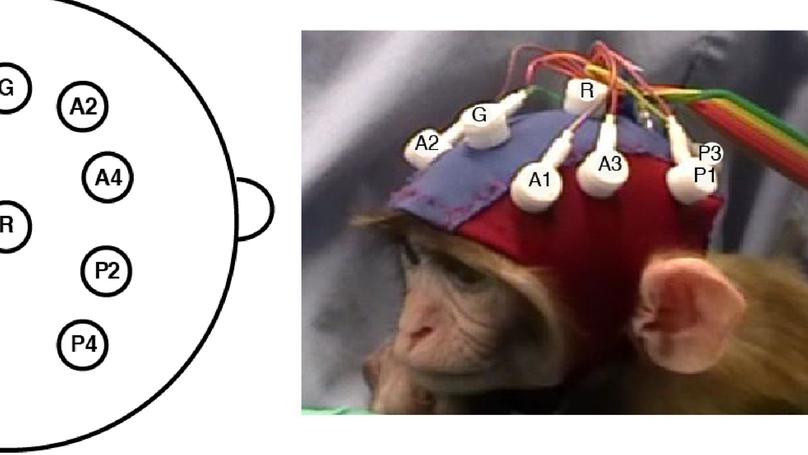
Although positive effects of oxytocin (OT) on social functioning are well-demonstrated, little is known about the mechanisms through which OT may drive early social development, or its therapeutic efficacy in infancy. To address these critical issues, we investigated the effects of exogenous OT on neural (EEG) and behavioral responses during observation of live facial gestures in infant macaques with limited social exposure (i.e. nursery-reared). Three key findings were revealed. First, OT increased alpha suppression over posterior scalp regions during observation of facial gestures but not non-biological movement, suggesting that OT targets self-other matching and attentional cortical networks involved in social perception from very early infancy. Second, OT increased infant production of matching facial gestures and attention towards the most socially-relevant facial stimuli, both behaviors typically silenced by early social deprivation. Third, infants with higher cortisol levels appeared to benefit the most from OT, displaying greater improvements in prosocial behaviors after OT administration. Altogether, these findings suggest that OT promotes prosocial behaviors and associated neural responses likely impacted by early social adversity, and demonstrate the potential of OT administration to ameliorate social difficulties in the context of neurodevelopmental and early-emerging psychiatric disorders, at a developmental stage when brain plasticity is greatest.
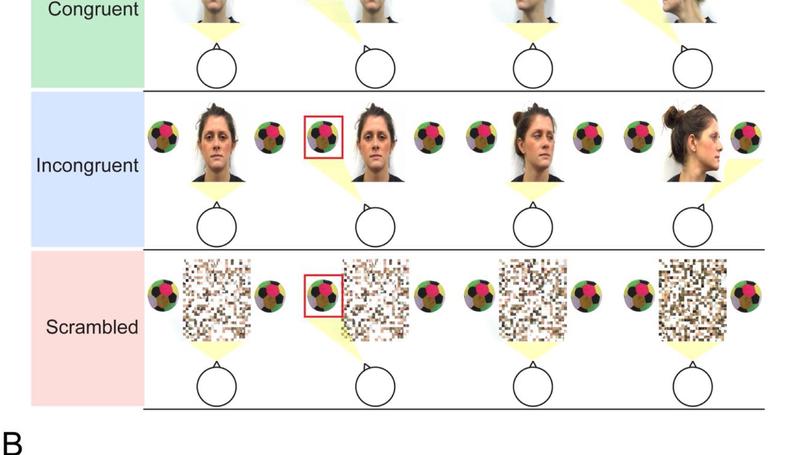
Detecting when one’s own gaze has been followed is a critical component of joint attention, but little is known about its development. To address this issue, we used electroencephalography (EEG) to record infant neural responses at 6.5 and 9.5 months during observation of an adult either turning to look at the same object as the infant (congruent actor), or turning to look at a different object (incongruent actor). We also used a preferential looking paradigm to investigate whether infants would demonstrate a preference for the congruent versus incongruent actor. Greater suppression of alpha band activity in the congruent compared to incongruent condition was revealed at both ages in central and parietal regions. However, the effect of congruency on alpha suppression was stronger at 9.5 months, and only at this age did infants demonstrate a preference towards looking at the congruent actor. Together, these results suggest that although infants are sensitive to others’ gaze following from early on, important neural and behavioural developments occur between 6.5 and 9.5 months.

Processing facial expressions is an essential component of social interaction, especially for preverbal infants. In human adults and monkeys, this process involves the motor system, with a neural matching mechanism believed to couple self- and other-generated facial gestures. Here, we used electroencephalography to demonstrate recruitment of the human motor system during observation and execution of facial expressions in nine-month-old infants, implicating this system in facial expression processing from a very young age. Notably, examination of early video-recorded mother-infant interactions supported the common, but as yet untested, hypothesis that maternal mirroring of infant facial gestures is central to the development of a neural matching mechanism for these gestures. Specifically, the extent to which mothers mirrored infant facial expressions at two months postpartum predicted infant motor system activity during observation of the same expressions at nine months. This suggests that maternal mirroring strengthens mappings between visual and motor representations of facial gestures, which increases infant neural sensitivity to particularly relevant cues in the early social environment.
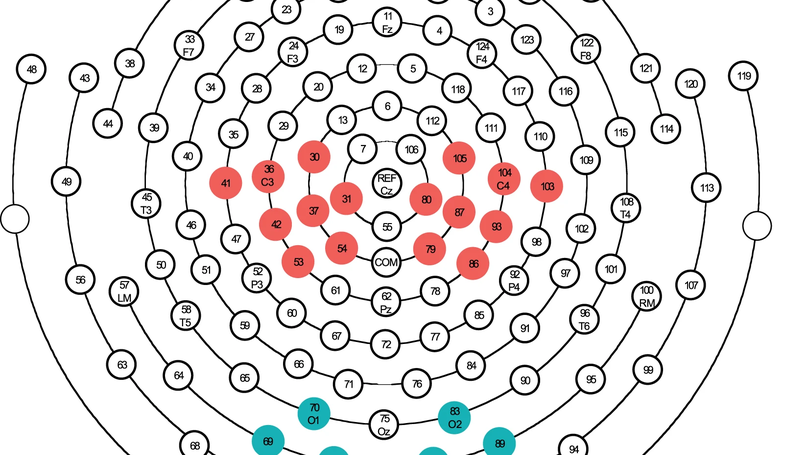
Simulation theories propose that observing another’s facial expression activates sensorimotor representations involved in the execution of that expression, facilitating recognition processes. The mirror neuron system (MNS) is a potential mechanism underlying simulation of facial expressions, with like neural processes activated both during observation and performance. Research with monkeys and adult humans supports this proposal, but so far there have been no investigations of facial MNS activity early in human development. The current study used electroencephalography (EEG) to explore mu rhythm desynchronization, an index of MNS activity, in 30-month-old children as they observed videos of dynamic emotional and non-emotional facial expressions, as well as scrambled versions of the same videos. We found significant mu desynchronization in central regions during observation and execution of both emotional and non-emotional facial expressions, which was right-lateralized for emotional and bilateral for non-emotional expressions during observation. These findings support previous research suggesting movement simulation during observation of facial expressions, and are the first to provide evidence for sensorimotor activation during observation of facial expressions, consistent with a functioning facial MNS at an early stage of human development.
Publications
Contact
- holly.rayson1@gmail.com
- 67 Boulevard Pinel, Bron, 69500
